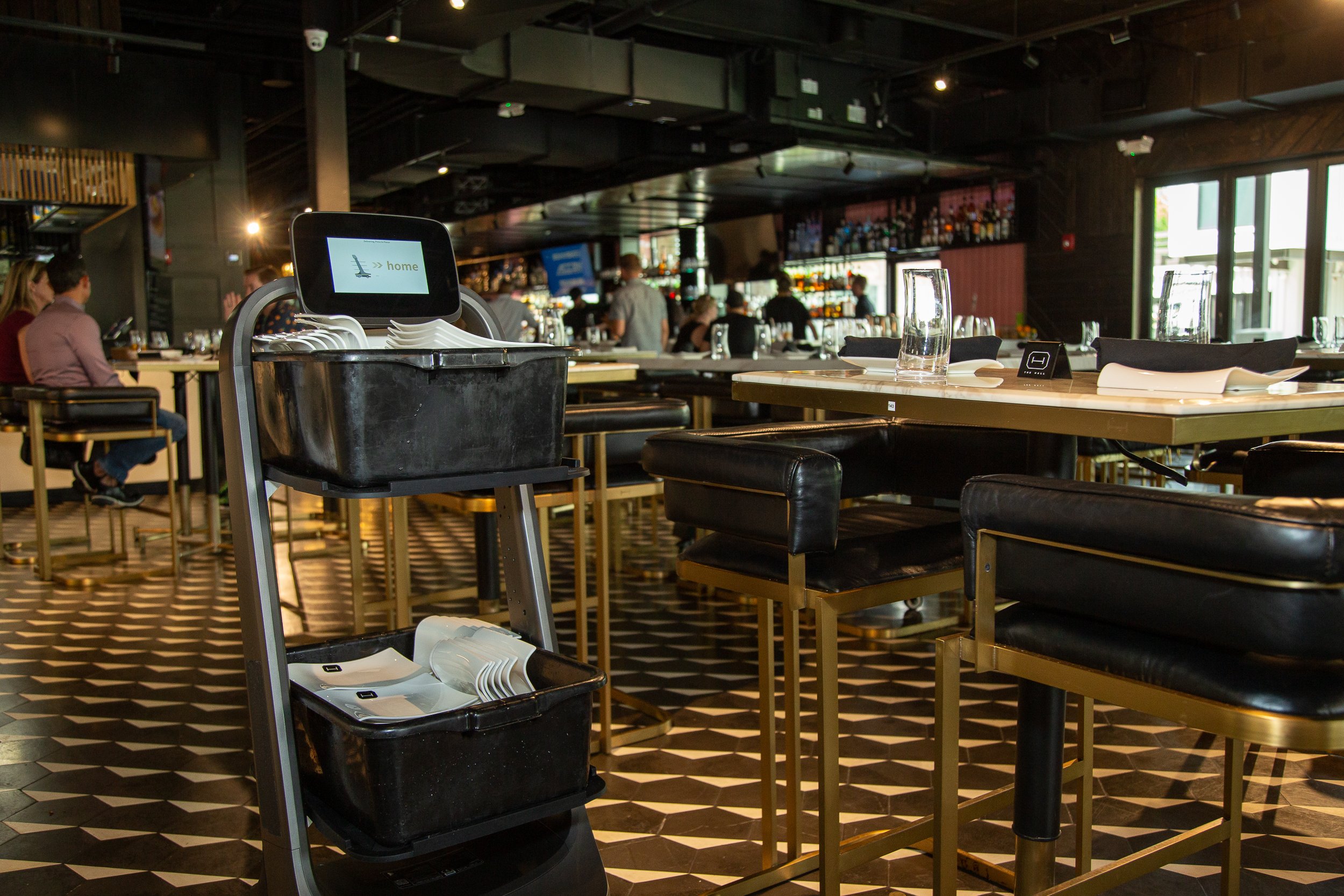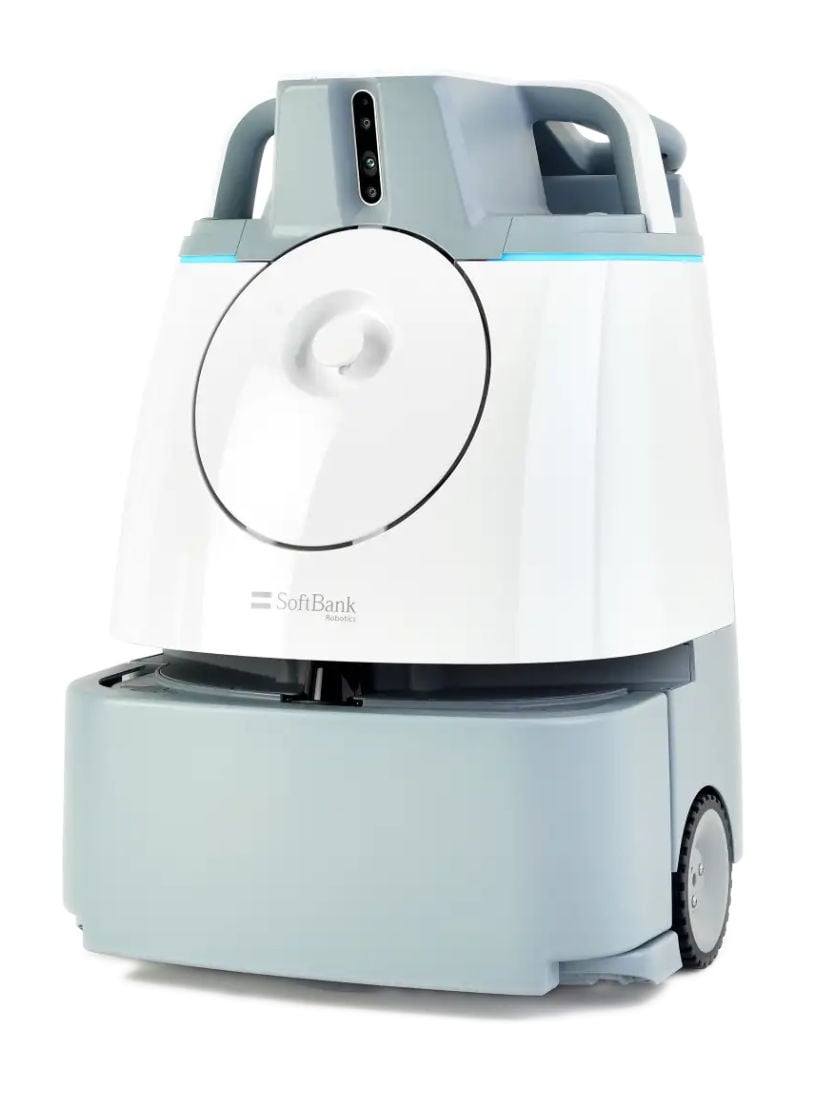From contactless payments to self-order kiosks to autonomous food service, emerging restaurant technologies are quickly transforming the way people dine out. One of the latest tech trends to shake up the restaurant industry is robots. As the industry struggles to retain and engage workers, restaurant owners are turning to robots to help them fill operational gaps, increase efficiency, and improve the overall customer experience.
The question is, are these robots worth the investment? To find out, we’ll dive into how robots are being used in restaurants today, the advantages they can provide, and the costs associated with acquiring and maintaining these robots.
How Robot Technology is Used in Restaurants Today
Restaurants are already experimenting with robots for a wide variety of different use cases, including serving food, collecting dirty dishes, scrubbing floors, preparing food, and even taking orders. Robots excel at these mundane and repetitive tasks, giving your team time back to focus on higher-value, customer-facing interactions.
For example, autonomous food service solutions like X1 from SoftBank Robotics can take over time-consuming tasks like food running and bussing in food service industries, giving staff time back to deliver higher levels of service where it’s needed most. Meanwhile, floor scrubbing robots can be used to automatically scrub, sweep, mop, and sanitize floors in larger restaurants, offloading a huge amount of work needed to keep large dining areas pristine.
Advantages of Using Robot Technology in Restaurants
Below we’ll explore several important advantages that robots deliver that have led many restaurants to understand their value and return on investment.
1. Fill Operational Gaps
Restaurants throughout the U.S. are still struggling to find enough workers to keep up with soaring demand. In fact, as of February 2023, the industry is 500,000 employees below 2020 levels, and restaurants are working to fill more than 2 million open jobs (Washington Post).
Added to that, churn rates in the restaurant industry remain high as workers seek more stable or fulfilling roles that give them a better quality of life (Robb Report). With seemingly no end in sight to the current labor shortage, restaurants have found relief in leveraging automation to fill the gaps.
Working alongside collaborative robots gives employees exciting opportunities to train and upskill in a future-ready workplace. In addition to their existing responsibilities, employees now have opportunities to learn how to operate robots and track performance. This, in turn, helps employers create more engaging work environments that motivate and retain staff.
2. Improve Workforce Efficiency
Robots make it possible for restaurant staff to work more efficiently, further reducing the strain on staff and giving team members time to focus on more rewarding, higher-value tasks. For example, restaurants can deploy a running and bussing robot to not only deliver food to tables, but also carry dirty dishes and bring them back to the kitchen.
This saves servers time, since they aren’t running back and forth to the kitchen as often, and allows them to spend more time engaging with customers at their tables. Dishwashers can also work more efficiently as the robot busses back dishes consistently throughout the shift, instead of all at once at the end of the night. By alleviating the more frustrating aspects of the job, implementing restaurant service robots can also drive higher rates of job satisfaction and reduced staff turnover.
3. Reduce Costly Errors and Waste
Any mundane or repetitive task is prone to error. Humans naturally tire of boring tasks, which makes them more likely to become disengaged. Plus, when there aren’t enough workers, staff can also become rushed and are more likely to make mistakes. A robot, on the other hand, can execute routine tasks with a much smaller margin of error.
Using robots to offload these tasks means fewer mistakes and less food waste caused by missteps in the kitchen — which can ultimately result in time and cost savings. Meanwhile, these robots also free up time for staff to focus on other aspects of their jobs that require attention and focus–like adhering to health and safety protocols.
4. Reduce Customer Wait Times
When restaurants are strapped for labor, it has a direct impact on the customer experience. One of the biggest problems is longer wait times, which can then lead to other problems. For example, after a long wait, customers are often further disappointed by cold food, mistakes to their order, or subpar food preparations. And even a single bad experience may dissuade customers from returning in the future.
However, when restaurant owners automate certain food services, they can prevent many issues that arise with long wait times. Autonomous food service solutions help deliver food to guests at a regular cadence and help ensure that no order is left waiting beneath the heat lamp for too long.
5. Deliver a “Return on Experience”
Finally, robots help restaurants create a unique and memorable experience for their customers. That’s because service robots aren’t like the heavy, industrial robots we are used to seeing. Robots are still novel in restaurants, and they inevitably spark curiosity and excitement in customers, who often take out their phones to snap photos and videos. In fact, hospitality leaders that have deployed robots in their restaurants have reported a higher rate of tips and more repeat business–an unexpected “return on experience.”
Costs of Using Robot Technology in Restaurants
As with any upgrade to your restaurant, it’s worth understanding the costs of robots and how their expenses can make your restaurant more cost effective.
One primary concern is the upfront financial cost. As with any new piece of equipment, deploying robots comes with some expenses, both capital (CapEx) and operating (OpEx) costs. For one, there’s the upfront cost to purchase the equipment. However, it is important to consider that the cost to acquire a robotics solution is a fixed cost, so it will not be impacted by rising labor costs.
By integrating collaborative robots in their existing human workforce, many restaurant owners also discover that any additional costs incurred upfront help them fill their existing gaps in labor. Plus, by automating menial tasks, restaurant robots can improve worker safety — which improves retention — and allow your staff to focus on tasks that delight your customers and drive more revenue.
While there are ongoing maintenance costs to consider, robot technology has come a long way and become more accessible and easier to use and maintain. It’s also a good idea to work with a robotics partner, like SoftBank Robotics, that provides comprehensive training, deployment services and ongoing support to ensure successful adoption of your robotics solution(s).
So, Are Robots Worth the Investment?
Robots are quickly gaining acceptance and traction across the restaurant industry–and for good reason. This innovative technology is already helping restaurants fill labor gaps, improve efficiency, optimize costs, and drive customer satisfaction and loyalty.
Learn more about how autonomous food service solutions like X1 can accelerate your restaurant operations today.








